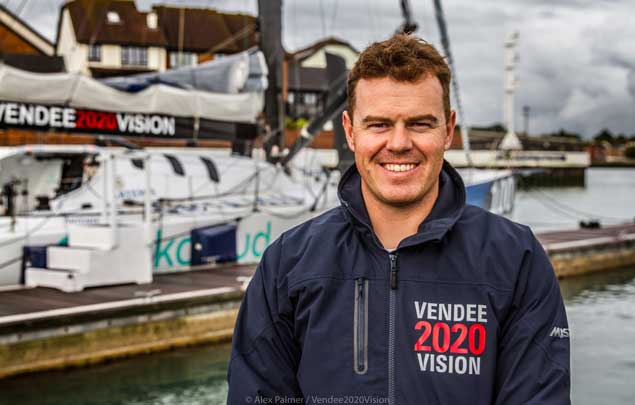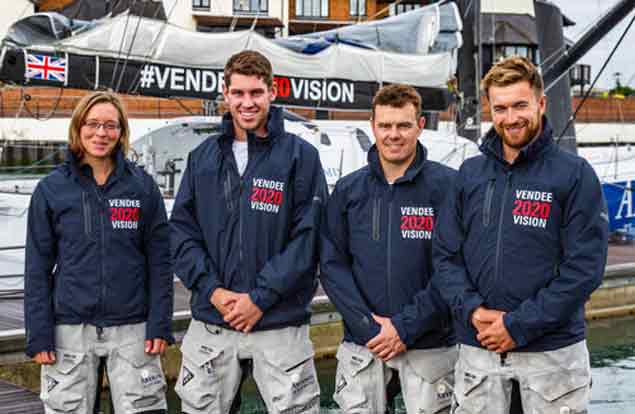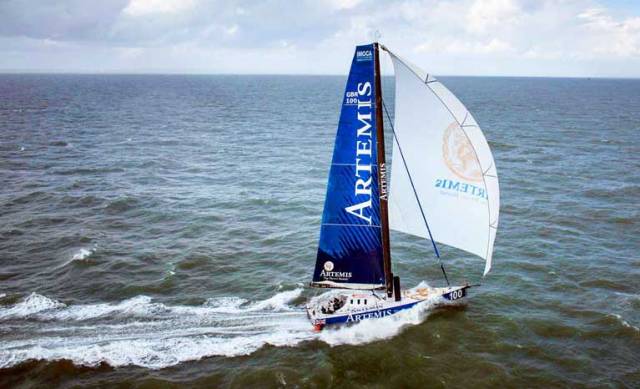Mikey Ferguson from the Royal Ulster YC on Belfast Lough and Andrew Baker from the Quoile YC on Strangford Lough have played a key role in establishing a new mono-hull record for the 620-mile course from Land’s End in southwest England to John O’Groat’s in northeast Scotland writes W M Nixon.
At first glance, the previous record - established by Phil Sharp with an Open 40 in 2015 - looked to be eminently beatable with a time of 3 days 11 hours and 52 minutes to provide an average speed of “only” 7.39. After all, the Artemis crew of Mikey Ferguson, Andrew Baker, Lizzy Foreman, and Jack Triggger (the latter recruited from the Team Concise), were racing their much larger IMOCA 60, which established a 5 day 14 hours record for the 2,000-mile Round Britain and Ireland circuit in 2014.
But the shortest course from Land’s End to John O’Groat’s takes you through all sorts of tide-riven channels – St George’s Channel and the North Channel to name only two – which can not only build up boat-breaking seas when strong winds are against the stream, but as the coast is sometimes close – sometimes very close - and frequently steep-to as well, it can play all sort of games with wind strength and direction.
Taking an Open 60 through it all at maximum speed is a bit like riding a tiger through a maze. Everything needs to be working properly, but after they’d starting zapping north from Land’s End at 1500hrs UTC last Friday (Sept. 22nd) with everything looking good for favourable and vigorous winds thanks to a deep low out beyond Ireland giving a strong southerly airstream, the wind instruments started to go on the blink.
 “We had to throttle back at night after the wind instruments had failed, as a crash gybe in those conditions would have been disastrous”
“We had to throttle back at night after the wind instruments had failed, as a crash gybe in those conditions would have been disastrous”
When they failed completely, Mikey Ferguson made the decision to sail during the long hours of darkness at one notch below maximum power in order to cut a bit of slack for helmsmen having to steer by feel through the long Equinoctial night – “a crash gybe would have been total disaster”.
Thus although average speed was well above the required minimum, off Wicklow Head early on Saturday morning they were making a modest 14 knots, but within two or three hours were going better past Dundalk Bay at 16.8 knot. However, sail damage and problems with the mainsail carriage made a two hour stop in flat seas a dream solution, and Mikey’s home waters of Belfast Lough came up trumps. He even brought the boat into the lough through the narrow and rocky Donaghaee Sound inside Copeland Island to save time.
A couple of hours of hectic activity off Bangor put things right. They then exited the lough in the evening past Black head at 17.3 knots - probably the best through-the-water speed achieved, for although they were showing 18.8 knots approaching Fair head, there was tide involved. They went outside Rathlin and on into a miserable night - “lousy visibility and always that fear of gybing” – to make their way out past Islay and into the Sea of the Hebrides inside the Western Isles.
By this time the real power was going out of the wind, and on Sunday evening as night drew on and they sailed past Cape Wrath, the unthinksable happened. It became totally windless. Not calm by any means, but not a breath of a breeze. They struggled across Scotland’s north coast in any scraps of wind they could find, and slowly the Orkneys came up on the port hand this (Monday) morning, and the Scottish mainland crawled by to starboard.
 Artemis crew of Lizzy Ferguson, Jack Trigger, Miker Foreman, and Andrew Baker
Artemis crew of Lizzy Ferguson, Jack Trigger, Miker Foreman, and Andrew Baker
Ideally, to finish such a record passage with an appropriate flourish, you sweep through the Pentland Firth close past John O’Groat’s on the mainland side and Duncansby Head beyond it, with the Orkneys well away on the port hand. But in struggling to cross the virtual finish line running due north from John O’Groat’s, the Artemis crew actually found themselves well over on the Orkney side early this morning as they made it across to bring the record down to 2 days 14 hours 6 minutes and 44 seconds. They’ve taken a clean 21 hours and 44 minutes off the previous record. But as Robin Knox-Johnston said of his new Round Ireland Record in May 1986: “It’s still eminently beatable”.






























































